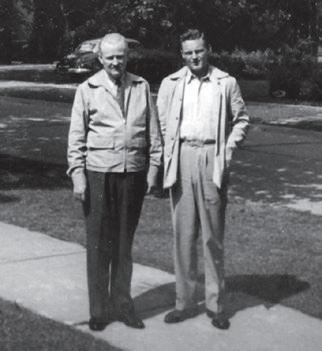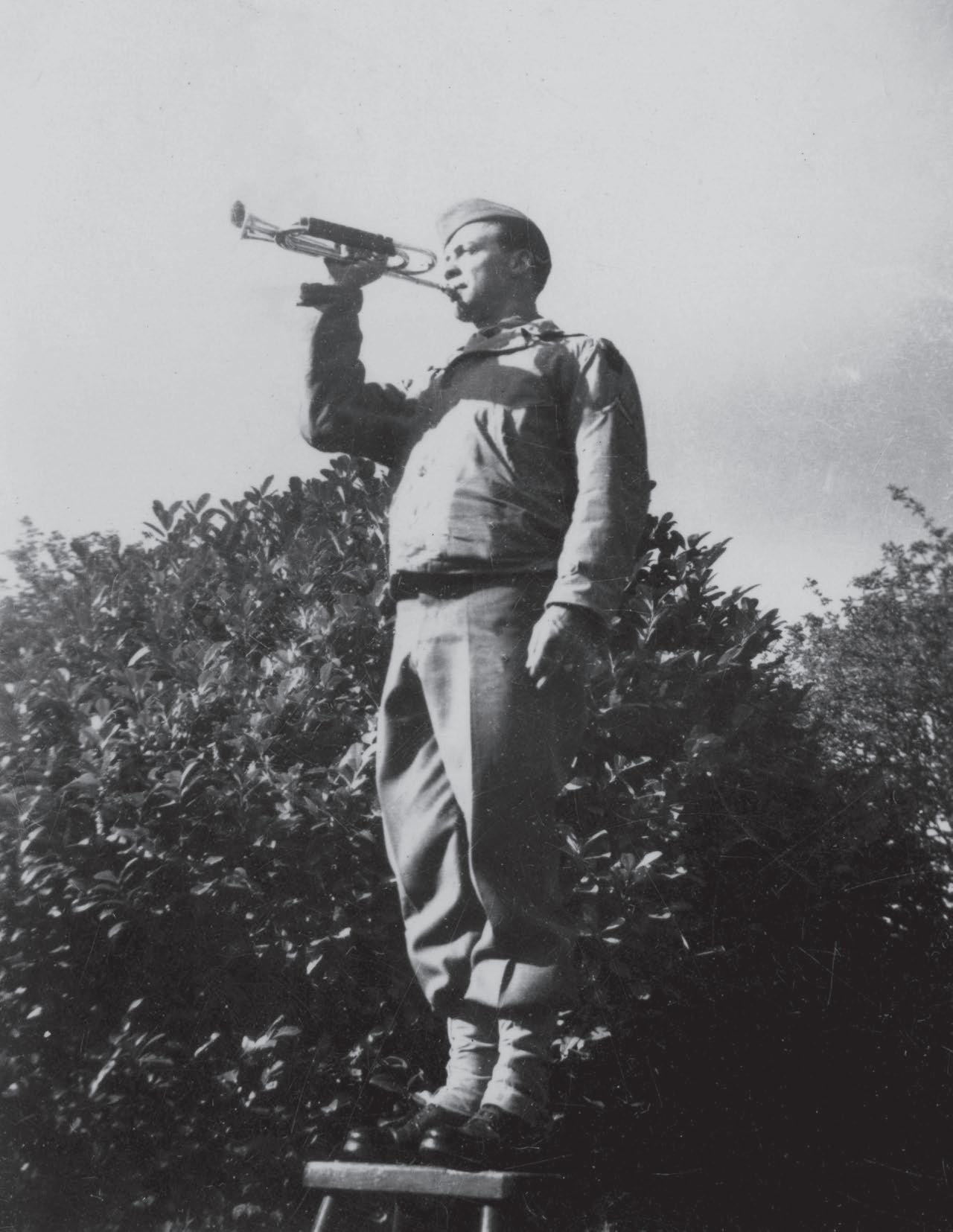
2 minute read
Following the Family Flight Plan
A Story Of Father And Son Pilots In Service
By Andrea Hoffman Collections Manager
Advertisement
For Harold A. Todd Sr and his son Wesley Scott Todd, both having served as pilots in the U.S. military during World War I and World War II, it must have felt like a uniquely shared and yet completely unfamiliar experience. The elder Todd enlisted in the Army Air Service on November 5, 1917 and encountered military flight in its infancy, a mere eight years after the U.S. Army Signal Corps had bought its very first military aircraft. Wesley Scott Todd flew the advanced F4U Corsair aircraft as a World War II fighter pilot for the United States Marine Corps aboard Essex-class aircraft carriers in the Pacific Theater.
Harold A. Todd, Sr was born in Portsmouth, Ohio, and was a newlywed living in Baton Rouge, Louisiana at the time he enlisted. Todd attended the U.S. School of Military Aeronautics at Cornell University and graduated on June 15, 1918. He logged his first solo flight that August aboard a Curtiss JN-4D biplane, and headed to Rockwell, California to attend the Signal Corps Aviation School. He was promoted to 2nd lieutenant before being released from service January 8, 1919. Harold returned home to Louisiana, where he and his wife Fanny Burgess Todd gave birth to their first son, Harold A. Todd, Jr, in 1920. The following year the family relocated to Milwaukee, Wisconsin and welcomed their second son Wesley, whom they called Wes. The family settled in nearby Wauwatosa a few years later.
After Wes graduated Wauwatosa High School in 1939, he left to attend the Citadel Military College in Charleston, South Carolina, not knowing he was to become part of the “class that never was”— the expected class of 1944 from which every member was instead called up for service by their junior year. While most of his would-be graduating class went into the infantry or artillery, Wes decided to instead enlist as a V-5 Naval Aviation Cadet, having taken an interest in flying while at the Citadel and already completed lessons at the nearby Hawthorne Flying Service.

In April 1943, Wes transferred to the Naval Air Training Center in Corpus Christi, Texas after completing primary flight training at Naval Air Station Glenview in Illinois. Two months later, 2nd Lieutenant Todd donned his first Marine uniform. He went on to serve aboard the USS Ticonderoga, USS Essex, and USS Bunker Hill. His service included flying strikes against the Tokorozawa and Koizumi airfields near Tokyo, and providing air cover for the landings at Iwo Jima and Okinawa. On May 11, 1945, the day the USS Bunker Hill was struck by two kamikaze planes and severely damaged, Todd was on a flight back from Okinawa and missed the destruction of the vessel that resulted in the deaths of nearly 400 of his fellow airmen and sailors.

By June, Wes was back stateside. While home on a 30-day leave, his family received word that his older brother Harold, a lieutenant (junior grade) in the U.S. Navy, was missing in action following the sinking of his submarine USS Lagato in the Gulf of Siam on May 4, 1945. Shortly thereafter, in deference to his parents as sole surviving son, Wes took his discharge from the U.S. Marine Corps. Wes returned to Wisconsin after the war, having received two Distinguished Flying Crosses during his service. He started a business selling farm machinery and engines, which his father bought into a few years later, changing the focus to construction equipment. Wes sold the business in 1968, a year after Harold passed away. During this time, Wes also remained an avid aviator, continuing to participate in aerobatic contests until the age of 80. Wesley Todd passed away in Oconomowoc, Wisconsin in 2017.
Operation Desert Shield and Operation Desert Storm








